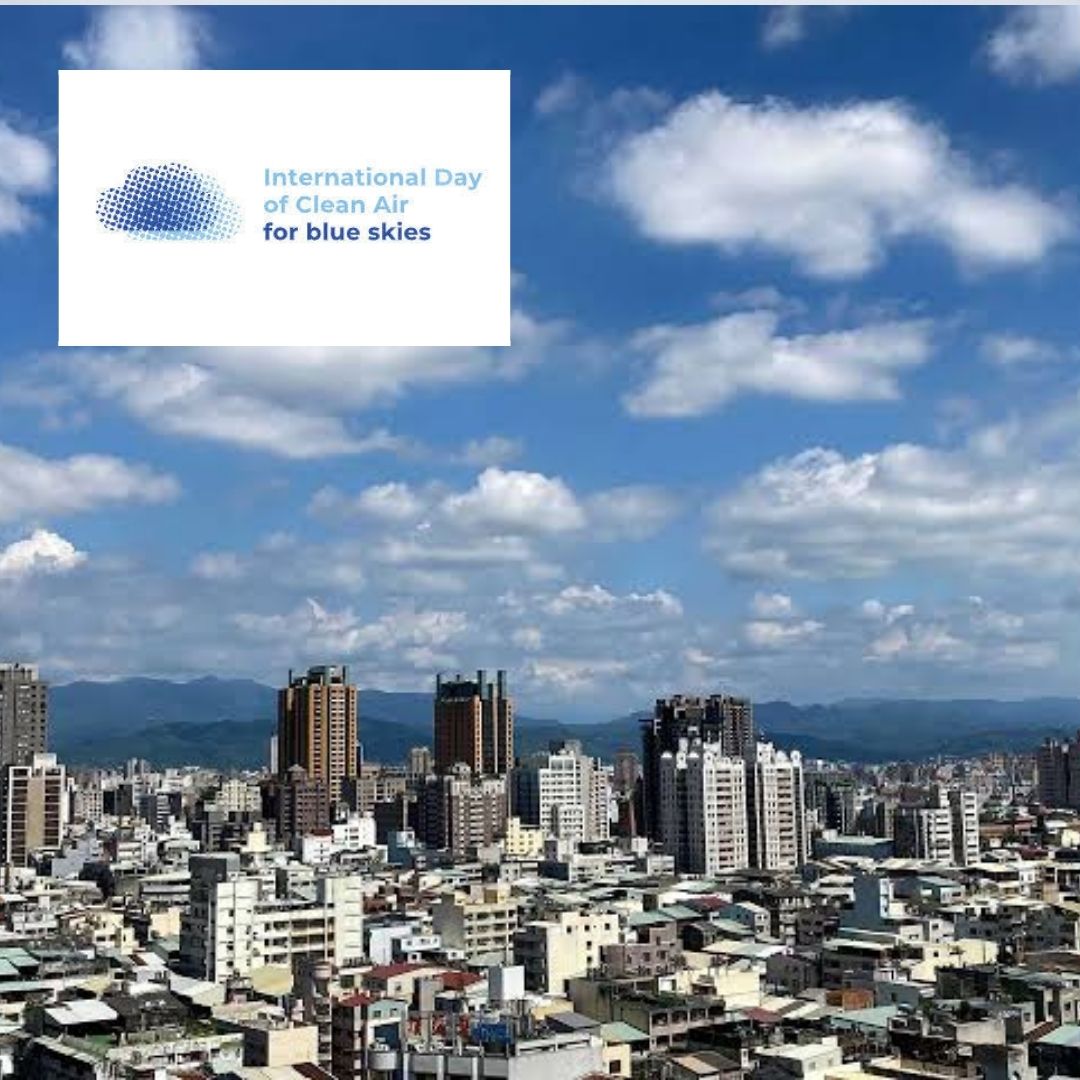
Image Credits: Greenpeace and Geneva Environment Network
Third International Day Of Clean Air For Blue Skies Calls For Collective Action To Combat Pollution
Writer: Laxmi Mohan Kumar
She is an aspiring journalist in the process of learning and unlearning many things. Always up for discussions on everything from popular culture to politics.
Others/World, 7 Sep 2022 6:12 AM GMT | Updated 7 Sep 2022 6:41 AM GMT
Editor : Snehadri Sarkar |
While he is a massive sports fanatic, his interest also lies in mainstream news and nitpicking trending and less talked about everyday issues.
Creatives : Laxmi Mohan Kumar
She is an aspiring journalist in the process of learning and unlearning many things. Always up for discussions on everything from popular culture to politics.
Earlier, the World Health Organisation (WHO) released data that exposed that 99% of the world is breathing polluted air, which has caused an estimated seven million premature deaths annually. It is a serious risk that we often fail to address.
The United Nations Environment Programme (UNEP) has charted several programmes to observe the third International Day of Clean Air for blue skies on September 7. Calling for collaborative efforts from governments, corporations, and individuals, the global body has encouraged many to take action to reduce the air pollution levels and bring a healthy shift in the quality of the air that we inhale. Under the banner "The Air We Share" and the hashtags #WorldCleanAirDay #TheAirWeShare, they have started a movement that is gaining momentum across platforms and borders.
Earlier, the World Health Organisation (WHO) released data that exposed that 99 per cent of the world is breathing polluted air, which has caused an estimated seven million premature deaths annually. It is a serious risk that we often fail to address. This is why a United Nations (UN) General Assembly set a resolution to commemorate September 7 as the International Day of Clean Air for blue skies. The day brings together many people worldwide to recognise and act for the right to a clean, healthy and sustainable environment.
Here's all you need to know about the day and where India falls in this mission.
The Air We Share
The theme for this year's International Day of Clean Air for blue skies is built on the transboundary nature of air that calls for collective global action. We breathe the same air and share the same atmosphere, making pollution a common problem that requires a common solution by all. Calling up everyone to act together to tackle the problem, the UNEP set the theme for this year as "The Air We Share".
A report by News18 stated that the day emphasises "immediate and strategic international cooperation for more efficient implementation of mitigation policies and actions to tackle air pollution", and believes it to be the need of the hour. On the global level, UNEP and its partners will be outlining the actions that the people can undertake, followed by a public service announcement video and a statement by the Chief Scientists from the bodies of UNEP, WHO, the Food and Agriculture Organization of the United Nations, the International Union for Conservation of Nature (IUCN), and the World Meteorological Organization (WMO).
The Backdrop
The idea for recognising a day as an International Day of Clean Air for Blue Skies was adopted during the 74th session of the UN General Assembly in December 2019. Hosting summits and panels with member states, the day is observed with the attendees discussing the data on the air pollution levels and the measures to tackle it. Awareness events are organised along the same lines, and solutions are formulated on a global as well as regional scale.
Where Does India Stand On Its Pollution Scales?
Exposure to polluted air differs region-wise and is often found to be higher in areas with busy highways or industrial belts. This air that we intake permits pollutants to enter our lungs and bloodstream, which then causes severe reactions and disturbances within a health system. A more severe scenario could also hospitalise an individual for breathing-related illnesses or even cancer.
Understanding the severity of this issue, it's important to identify where the country stands as per the guidelines and scales issued by the UN Health Agency and WHO. These guidelines act as a reference for policymakers, advocacy groups and many others to revise their take on a pollution-free environment and act upon it. Earlier, a Particulate Matter (PM) 2.5 concentration of 25 micrograms per cubic metre in a 24-hour period was considered safe, but now a concentration of over 15 micrograms is deemed not safe.
In accordance with this, India continues to be categorised as one of the most polluted places in the world, with the levels of harmful pollutants a lot higher than the recommended values. A study by Greenpeace in the year 2020 showed that Delhi's air quality was nearly 17 times higher than the PM2.5 recommendations. Many other Indian metropolitan cities also followed the cue and dominated the list of cities across the world with the most toxic air, with about 35-50 polluted cities.
As per a report by News18, the air quality was reported to have cleared considerably with lesser human and industrial activity during the pandemic. However, as the economy began recovering and normalcy returned, India went back to breathing in toxic air again.
Like the WHO Director-General Tedros Adhanom Ghebreyesus had said, "There is nothing more essential for life than air quality," and yet the simple act of breathing has contributed to seven million deaths in a year. Air pollution has been compared to global health risks such as unhealthy diets and smoking tobacco, and it's high time for a collaborative effort to find a viable solution. People can join in the conversation and understand the concerns better through social media hashtags.
Also Read: Study Reveals How Air Pollution Is Linked To Increased Risk Of Autoimmune Diseases
 All section
All section














